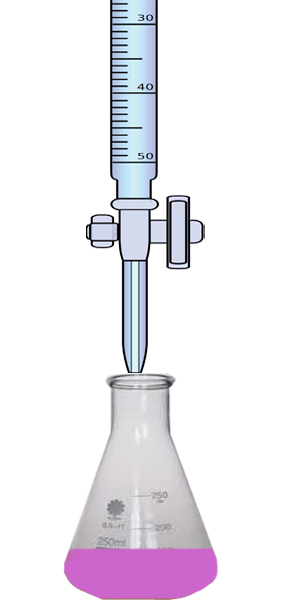Determination of hardness of water by EDTA method is one of the three main methods for determination of hardness of water. EDTA means Ethylenediaminetetraacetic acid. This EDTA reagent can be forming edta-metal complexes by the reaction with metal ions except for alkali metal ions. This reagent can forms a stable complex with the alkaline earth metal like calcium ion and magnesium ion in alkaline condition pH above 9.0. Therefore the total hardness of water can be determination by edta titration method.
In this method buffer solution is used for attain suitable condition i.e pH level above 9 for the titration. Buffer solution preserve pH at a balanced position. In aqueous solution edta exist as H2Y2- form. Hence edta react with alkaline earth metals as 1:1. As a result for every mole of alkaline earth metal ion in water sample, one mole of EDTA will be consumed during titration.
Reaction: H2Y2- + M2+ → MY2- + 2H+
During titration Eriochrome Black T is used as indicator. The indicator is red in color when it is forms complexes with the metal ions and blue in color when it is free.
Reaction: MIn– + H2Y2- → HIn2- + MY2- + H+
Determination of hardness of water by EDTA method is father classified into four methods.

- Ammonia Buffer procedure
- Borate Buffer procedure
- Low hardness procedure
- Calcium hardness procedure.
Ammonia Buffer procedure: This type determination of hardness of water by EDTA method is especially preferred for those water, where is unfamiliar composition, sewage water, alkalinity or acidity high and for industrial waste water. This method can also be used for normal water. A high capability buffer solution is used to conquer buffering substance in the sample. It has mainly three disadvantages;
- Utilize of ammonia buffer solution may perhaps not be acceptable if Nessler ammonia determination are being carried out in the same room.
- If the water sample contains high in calcium ion and bicarbonate ion, it is a affinity for calcium carbonate to be precipitated.
- The existence of magnesium in the titrant.
Borate Buffer procedure: Borate buffer method is a simpler among the determination of hardness of water by EDTA method. This method is to overcome the limitation of ammonia buffer method. This method does not liberate any ammonia; somewhat calcium carbonate precipitated but not totally holds back. It is not suitable for those water; which is unfamiliar water sample, contains acidity or high alkalinity, industrial waste and sewage.
Low hardness procedure: This is another type of determination of hardness of water by EDTA method. This method is used for waters of low hardness less than 5 mg/l and also for ionexchange effluent or other conditioning water.
Calcium hardness procedure: This method is used for determination of calcium hardness, but it is not standard accurate method for calcium.